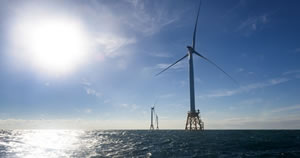Industrializing Offshore Wind Energy Development
 University of Delaware: Working closely with industry partners, University of Delaware researchers have developed a new method for constructing offshore wind farms and proven that it is cheaper, faster and could make possible offshore wind deployment at a scale and pace able to keep up with the region’s scheduled retirements of nuclear and coal-fired power plants.
University of Delaware: Working closely with industry partners, University of Delaware researchers have developed a new method for constructing offshore wind farms and proven that it is cheaper, faster and could make possible offshore wind deployment at a scale and pace able to keep up with the region’s scheduled retirements of nuclear and coal-fired power plants.
The researchers calculated that their innovative process will cost up to $1.6 billion less per project than conventional approaches and take half the construction time.
“In planning for offshore wind power, the big question is how we generate electricity cost-competitively, and at a scale that is both a relevant replacement for aging power plants and also applicable to climate change,” said the project’s principal investigator, Willett Kempton, professor in the College of Earth, Ocean, and Environment (CEOE). “We’re the first people who have shown the engineering details, step-by-step, how to achieve that.”
What the research team found
The key insight that allowed Kempton’s team to make such considerable optimizations in cost and deployment speed was that the entire structure, from seafloor mounting to the top of the turbine, can be assembled in one piece in port, moved as a unit, and in one step placed into the sea floor. It may seem like a simple idea, but it was by no means obvious that it would work with existing equipment until completing the detailed engineering and cost analysis. Full Article:
Comments (0)
This post does not have any comments. Be the first to leave a comment below.
Featured Product

